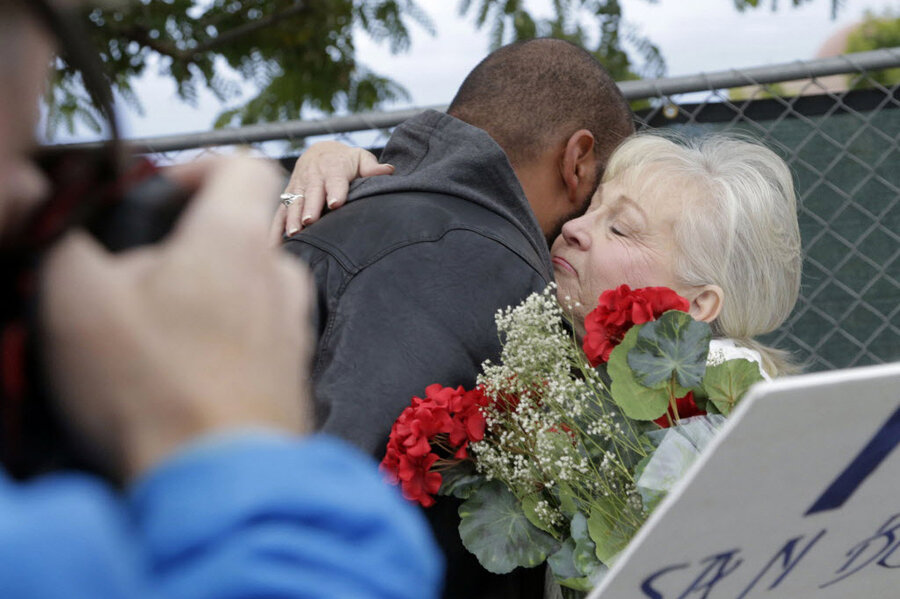In San Bernardino, survivors are ready for their normal routines
Loading...
While most employees around the country shuffled into their offices this morning after a month of holiday celebrations, the 600 employees of the Inland Regional Center in San Bernardino returned from a more grim hiatus.
Most employees of the nonprofit organization that provides services to 31,000 developmentally disabled people haven’t been back to the office since the December 2 massacre of 14 people on the center's campus.
On Monday, they finally returned, greeted by reporters, and security guards who checked IDs at the entrance to the center's parking lot, which was set off by a chain-link fence, wrapped in green mesh, that circled the property.
The fence originally was erected to keep people off the campus during the investigation of the attacks, but now remains a semi-permanent fixture meant to make employees feel safe.
"Most of us are relieved to be back at work. We want to continue with the normalcy, and we miss each other very much," Lavinia Johnson, the center's executive director told reporters.
The offices in the complex were still decorated for Christmas when employees returned; left undisturbed since terrified staff evacuated the complex in a frenzy when Syed Rizwan Farook, an inspector with the county’s public health department, which was hosting a party at the center, and his wife, Tashfeen Malik, began their shooting spree. The two were killed in a shootout with police hours later.
Many social workers continued to work in the intervening weeks, visiting the homes of autistic children and mentally disabled adults. But they all haven't been together in one place since the shootings.
Ms. Johnson said that people missed each other and their daily work routines.
"That's what I'm hearing from them: 'We want to be together again. We want to be back at work,'" said Johnson.
At a welcome breakfast this morning, employees had a chance to reconnect with each other.
"Just be together again," Johnson said, "share where they're at."
The workers will have access to professional counselors, and in the afternoon, will be able to mourn together at a memorial service for victims of the shooting.
"Our goal is to help people help themselves,” said Kevin Urtz, the center’s associate executive director. “And that's pretty much the same strategy that we want to take with our staff – you know, help them through this," he said.
This report uses material from the Associated Press.





